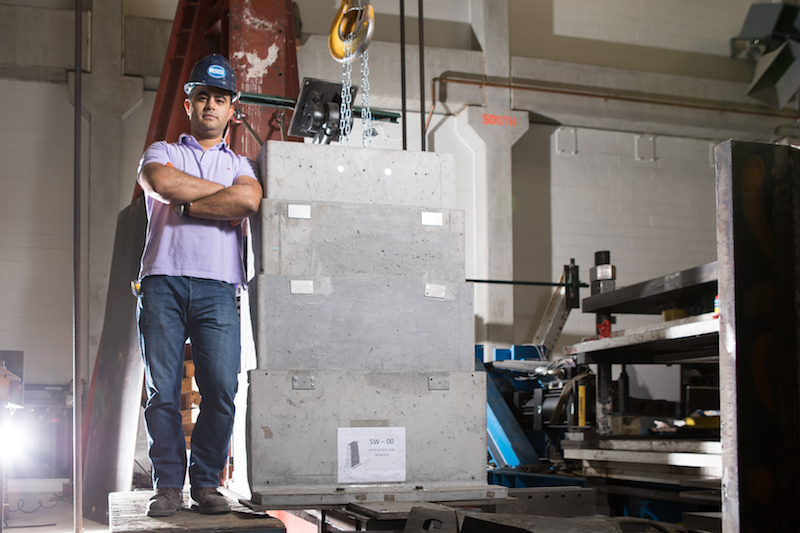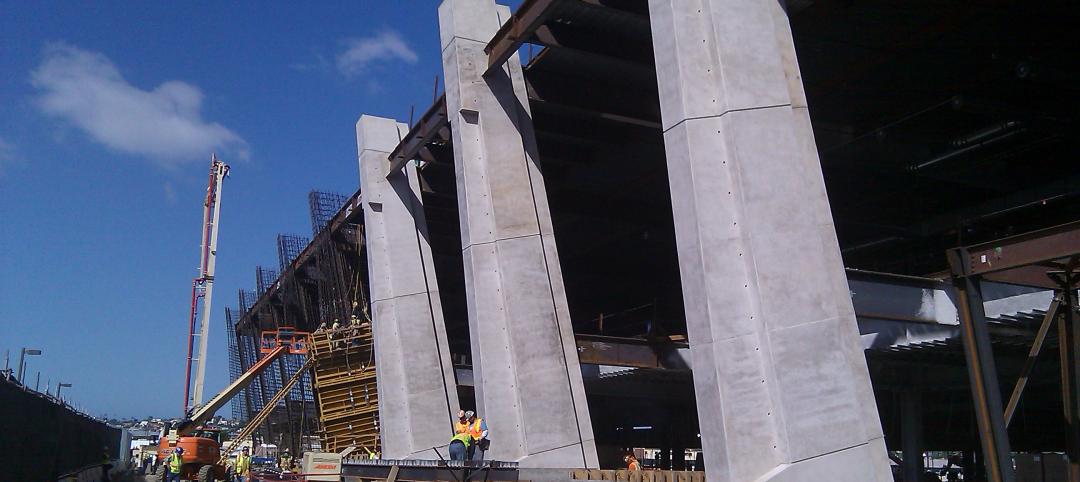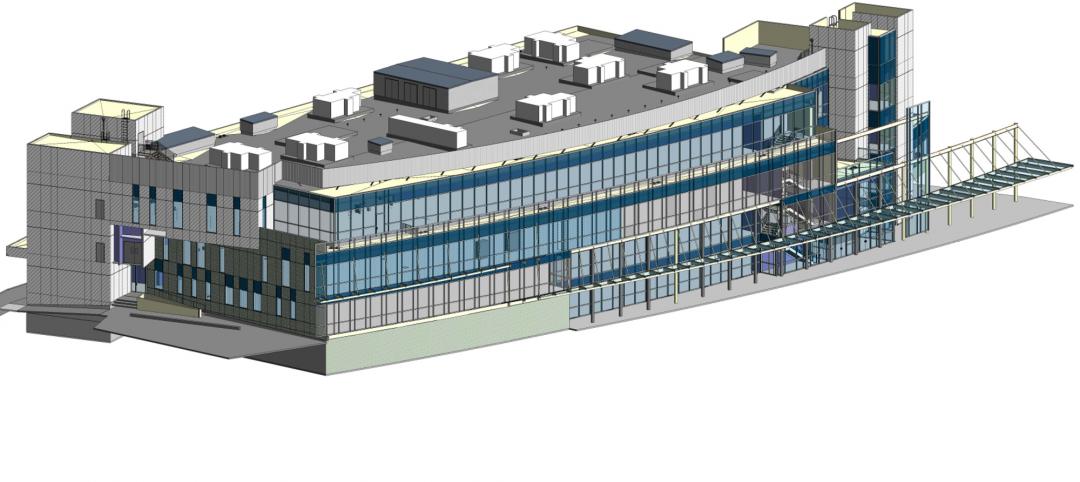Water is often times considered to be the most powerful force on the planet. Which means, under the right circumstances, it can also be the most destructive. All you have to do is watch footage from the tsunami that occurred in Japan in 2011 to understand just how devastating a force it can be. And when the water begins rising, be it from an ocean, lake, or river, it can seem like there is no stopping it from its relentless march forward. Jorge Cueto, a Ph.D. candidate at the University of Buffalo, however, has come up with an invention to try and do just that: stop floodwaters before they can ever reach homes or businesses.
Cueto came up with a patent-pending system of telescoping fiber-reinforced concrete boxes that he hopes to develop into “rise on demand” floodwalls. Think of Russian nesting dolls, but with concrete blocks.
Each section of the wall rises from another section that is just a little larger. Using a telescopic design such as this means that when the floodwalls are not needed, they will be able to retract underground so as not to block water views or roads and sidewalks, such as those around hospitals, that cannot be permanently blocked.
In order to keep the water from flooding into any open cracks that may result from where each block meets the one above and below it, Cueto is in the process of developing a system of gaskets to make the walls water tight. He is also working on expandable flaps to cover the space between each wall section.
Much of the science and plenty of technical aspects still need to be worked out before Cueto’s telescopic walls find a real-world use, but the main idea is in place and, if successful, Cueto’s invention could help prevent millions of dollars worth of damages due to floods.
For the full story, click here.
Related Stories
| May 30, 2012
Construction milestone reached for $1B expansion of San Diego International Airport
Components of the $9-million structural concrete construction phase included a 700-foot-long, below-grade baggage-handling tunnel; metal decks covered in poured-in-place concrete; slab-on-grade for the new terminal; and 10 exterior architectural columns––each 56-feet tall and erected at a 14-degree angle.
| May 29, 2012
Reconstruction Awards Entry Information
Download a PDF of the Entry Information at the bottom of this page.
| May 24, 2012
2012 Reconstruction Awards Entry Form
Download a PDF of the Entry Form at the bottom of this page.
| May 15, 2012
One World Trade Center goes to new height of sustainability
One of the biggest challenges in developing this concrete mixture was meeting the Port Authority of New York/New Jersey’s strict requirement for the replacement of cement.
| May 11, 2012
CRSI appoints Brace chairman
Stevens also elected to board of directors and vice-chair.
| May 9, 2012
Stoddert Elementary School in DC wins first US DOE Green Ribbon School Award
Sustainable materials, operational efficiency, and student engagement create high-performance, healthy environment for life-long learning.
| May 7, 2012
2012 BUILDING TEAM AWARDS: TD Ameritrade Park
The new stadium for the College World Series in Omaha combines big-league amenities within a traditional minor league atmosphere.
| May 1, 2012
Construction is underway on MLK ambulatory care center in L.A.
Featuring a variety of sustainable features, the new facility is designed to achieve LEED Gold Certification.
| Apr 23, 2012
Innovative engineering behind BIG’s Vancouver Tower
Buro Happold’s structural design supports the top-heavy, complex building in a high seismic zone; engineers are using BIM technology to design a concrete structure with post-tensioned walls.
| Apr 19, 2012
Holcim cement plants recognized at PCA Spring Meeting
The Holly Hill plant received the PCA’s Chairman’s Safety Performance Award in recognition of their exceptional health and safety programs. The Theodore plant received the Environmental Performance Award in recognition of the steps they take beyond those required by laws, regulations and permits to minimize their impact on the environment.














